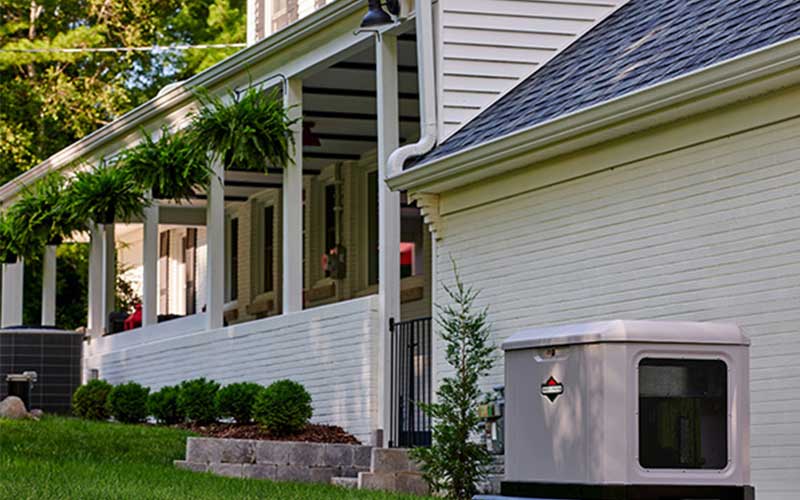
How Does a Generator Power a House? Detailed Guide 2023
How Does a Generator Power a House? Step-by-Step Guide 2023
Are you worried about power outages during a storm or a natural disaster? One of the best ways to protect your home is by investing in a generator.
A generator can provide backup power to your home, allowing you to stay comfortable and safe until the power is restored. But how exactly does a generator power a house?
In this article, we will explore the step-by-step process of how a generator powers a house, and how you can choose the right generator for your home.
What is a Generator?
A generator is a machine that converts mechanical energy into electrical energy.
It does this by using an engine to turn a rotor inside a coil of wire. As the rotor spins, it creates a magnetic field, which produces an electrical current in the wire.
This electrical current is then used to power electrical devices, such as lights, appliances, and electronics.
Types of Generators
There are two main types of generators: portable generators and standby generators.
1. Portable Generators
Portable generators are smaller, more affordable generators that can be moved around and used for a variety of purposes.
They are typically powered by gasoline or propane and can provide enough power to run a few essential appliances or devices during a power outage.
2. Standby Generators
Standby generators, also known as home generators, are larger and more powerful than portable generators.
They are designed to provide backup power to your entire home during a power outage. Standby generators are usually powered by natural gas or propane and can automatically turn on and off when the power goes out.

How Does a Generator Work? Step By Step Guide 2023
A generator generates electrical energy by converting mechanical energy. The generator’s engine generates mechanical energy by burning fuel, which is subsequently utilised to spin a rotor within a wire coil.
As the rotor rotates, it generates a magnetic field, which causes an electrical current to flow through the wire. This electricity is subsequently utilised to power your house.
1. Choosing the Right Generator for Your Home
Choosing the right generator for your home depends on several factors, including the size of your home, the number of appliances and devices you want to power, and your budget.
You should also consider the type of fuel you want to use, as different types of generators require different fuels.
2. Installation Process
The installation process for a standby generator can be complicated and should be done by a licensed professional.
The process usually involves installing a transfer switch, which allows the generator to connect to your home’s electrical system.
3. Connecting the Generator to Your Home
Once the generator is installed, you will need to connect it to your home’s electrical system.
This usually involves plugging the generator into the transfer switch and turning it on.
4. Starting and Stopping the Generator
To start the generator, you will need to follow the manufacturer’s instructions. This usually involves turning on the fuel supply, turning on the engine, and then turning on the generator.
To stop the generator, you will need to turn off the generator, turn off the engine, and then turn off the fuel supply.
5. Maintenance Tips
To keep your generator running smoothly, you should follow the manufacturer’s maintenance instructions. This may include changing the oil and air filters, checking the spark plug, and inspecting the battery.
6. Common Problems and Solutions
Some common problems with generators include engine failure, low oil pressure, and electrical problems.
To solve these issues, you may need to check the oil level, replace the spark plug, or clean the air filter. It’s important to follow the manufacturer’s instructions for troubleshooting and maintenance.
7. Safety Precautions
When using a generator, it’s important to follow proper safety precautions. This includes keeping the generator outdoors, away from windows and doors, and away from flammable materials.
You should also avoid overloading the generator and make sure it’s properly grounded.
8. Benefits of Having a Generator
Having a generator can provide peace of mind during power outages, allowing you to stay comfortable and safe in your home. It can also prevent food spoilage and protect your home from water damage due to frozen pipes.
Additionally, a generator can add value to your home and may even lower your homeowner’s insurance premiums

How Big Of A Generator Do I Need To Run A House? Detailed Guide 2023
When it comes to powering your home with a generator, the size of the generator you need depends on several factors, including the size of your home, your power needs, and the type of generator you choose.
Here’s a step-by-step guide to help you determine how big of a generator you need to run your house:
1. Calculate Your Power Needs
Calculating your power requirements is the first step in establishing the size of the generator you require. This entails determining the wattage of the appliances and devices in your home that you wish to power during an outage.
The wattage of an appliance is usually listed on the label or in the owner’s handbook.
Make a note of all the appliances and devices that you wish to power and put their wattages together. This will provide you with an overall power need for your generator.
2. Determine Your Starting Wattage
You must consider the initial wattage of your appliances and devices as well to their wattage. Refrigerators and air conditioners, for example, use more electricity to start up than they do to run continually.
You can discover the initial wattage of your appliance on its label or in the owner’s handbook to establish your starting wattage.
To calculate your total starting wattage, multiply this figure by the number of appliances you intend to run at the same time.
3. Choose Your Generator Type
Once you know your power needs, you can choose the type of generator that will meet those needs. There are two main types of generators: portable and standby.
Portable generators are typically smaller and less expensive than standby generators, but they require manual setup and can only power a limited number of appliances.
Standby generators are permanently installed and can provide backup power to your entire home.
4. Determine Your Generator Size
The size of the generator you need depends on your power requirements and the type of generator you choose. As a general rule, portable generators typically range from 1,000 to 10,000 watts, while standby generators can provide up to 20,000 watts or more.
To determine the size of generator you need, add your total starting wattage to your total running wattage. This will give you the total wattage your generator needs to produce.
Choose a generator that can produce at least this much power.
5. Consider Other Factors
Other considerations to consider when selecting a generator size include your power requirements. These include the climate in your area, your altitude, and the fuel type you want to utilise.
Generators produce less power at high elevations or in extreme temperatures, so if you live in a hot or high-altitude environment, you may require a larger generator.
Furthermore, certain fuels, such as natural gas, may provide less power than others.
6. Consult a Professional
It’s a good idea to consult an expert if you’re confused about the amount of generator you need or how to calculate your power requirements.
An electrician or generator installer can assist you in determining the optimal generator size for your house and ensuring that it is properly and professionally installed.

FAQs
Q1: How much power does a generator produce?
A: The power output of a generator can vary depending on the size and type of generator. Portable generators typically produce between 1,000 and 10,000 watts, while standby generators can produce up to 20,000 watts.
Q2: How long will a generator run on a full tank of gas?
A: This can vary depending on the size and type of generator, as well as the load being powered. A portable generator can typically run for 8-12 hours on a full tank of gas, while a standby generator can run for several days on a full tank of natural gas or propane.
Q3: Can I use a generator indoors?
A: No, generators should never be used indoors or in enclosed spaces, as they produce dangerous carbon monoxide fumes.
Q4: Do I need a permit to install a generator?
A: This can vary depending on where you live and the type of generator you are installing. Check with your local building department for specific regulations and requirements.
Q5: Can I install a generator myself?
A: It’s recommended to have a licensed professional install your generator to ensure it’s done safely and correctly.
Conclusion – How Does a Generator Power a House?
In conclusion, a generator is an essential investment for anyone who wants to protect their home and family during power outages.
By following the step-by-step process of installation, connection, and maintenance, you can ensure that your generator will provide reliable backup power whenever you need it.
- No Comments
- May 4, 2023
